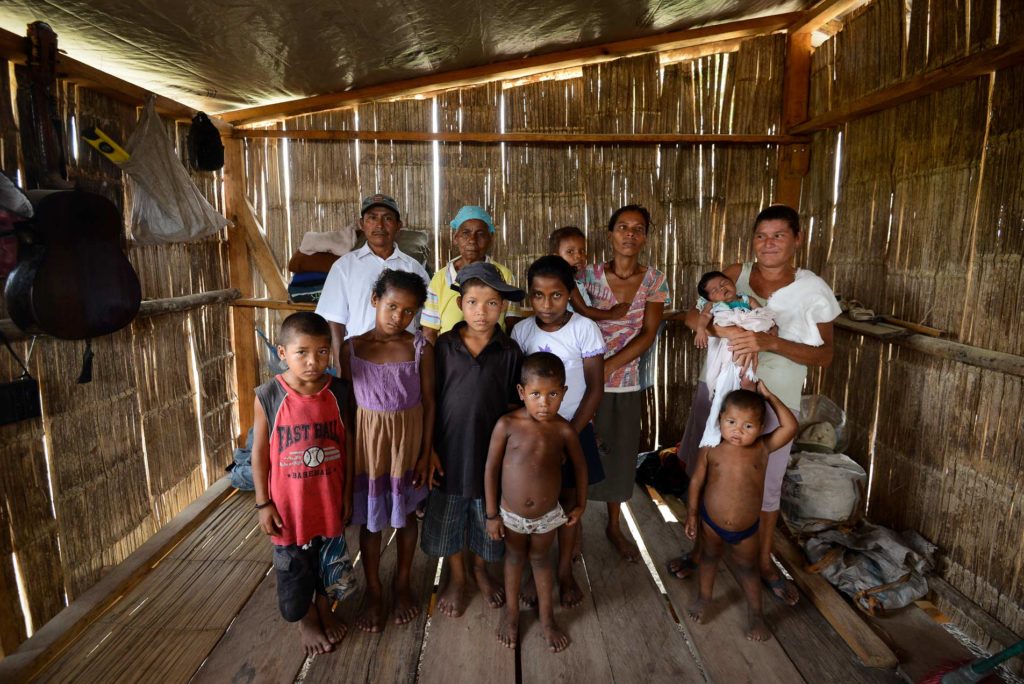Caught Between Famine and Violence: The Miskitos’ Silent Crisis
Report warns of worsening drama in indigenous communities

Nicaragua’s sociopolitical crisis has a differentiated impact among the Miskitos, increasing “the lack of protection and abandonment among those already suffering,” the report states.
By Wilfredo Miranda Aburto (Confidencial)
HAVANA TIMES – Murder, kidnapping, sexual assaults, military-caliber weaponry, persecution and exile are some of the words that Nicaraguans have been hearing daily since April of 2018, when the sociopolitical crisis erupted. However, among the Miskito communities of the northern Nicaraguan Caribbean, these words are not only recurring—they are a horrific reality that indigenous Nicaraguans have lived for many years, as they struggle to preserve their communal territories and their lives.
These are the findings in a report published and presented on August 13th in San Jose, Costa Rica, by the Center for Justice and International Law (CEJIL) and the Center for Justice and Human Rights of the Atlantic Coast of Nicaragua (CEJUDHCAN). The national crisis has made the plight of the Miskito community invisible.
“Although the violence increased starting on April 18, 2018, the state had already implemented a variety of regressive institutional regulations long before that date,” according to the report titled “Miskito Resistance: A Struggle for Territory and Survival.” The report emphasizes the total and all-encompassing power of Daniel Ortega and Rosario Murillo.
“Different social sectors have suffered the violation of their human rights. This is the case of the indigenous Miskito people who have been the victims of violence from long before the 2018 protests. These acts of violence were never investigated by the state,” the report adds.
The harm to the Miskito people that the document refers to includes the invasion of their territories, forced displacement and the food crisis “that has endangered the lives and survival of individuals and some communities.”
Although there were outbreaks of violence during the sociopolitical crisis on the North Caribbean Coast (specifically Puerto Cabezas), in Miskito regions violence and displacement caused by the invasion of their territories has been constant. “This dire situation that seriously violates their fundamental rights has been practically invisible and ignored by the national and international community, despite its seriousness and duration over time,” CEJIL and CEJUDHCAN reported.
“Even if the current crisis of democracy in the country does not have a direct relationship with the violence described (in Miskito communities), this crisis has a differentiated impact among the Miskitos, increasing “the lack of protection and abandonment among those already suffering,” the report emphasizes.
An analysis of 12 communities
The report focuses on 12 Miskito communities that have suffered the worst violence because of the land invasions. The invasion of these territories protected by law, as well as violence and forced displacement, has not stopped since 2012, when the land invasion phenomenon got worse.
The situation described in the report is very similar to the one documented by Confidencial in 2015, when land invaders assassinated over 35 Miskitos who refused to give up their lands. At that time Confidencial confirmed that then Attorney General, Hernan Estrada, as well as local leaders of the Sandinista Front (Carlos Alemán and Waldo Muller) were illegally trafficking in land titles to communal lands, selling them to “settlers”.
“The growing invasion has greatly affected the lifestyle of Miskito communities, forcing many to stop growing food on their lands or abandoning their ancestral territories altogether to seek refuge in other communities or urban areas,” warned the report presented in Costa Rica.
CEJIL and CEJUDHCAN reiterated that “the organized and deliberate violence of the land invaders” against communities includes murders, kidnappings, sexual assault, physical aggression and death threats. “The authorities have turned a blind eye to the violence and this means that those responsible for these violations have not been brought to justice,” the report indicated.
Similar to the murder of more than 325 Nicaraguans by paramilitaries and police since April of 2018, the Miskito have also been victims of lethal violence including shootings targeting “vital zones like the head and the trunk of the body,” the report states.
There are 10,381 Miskito living in the 12 communities analyzed in the report, of which 3008 continue living in exile on the other side of the Río Coco in Honduras, or in the capital cities of Nicaragua’s other departments.
Silent Hunger
The CEJIL and CEJUDHCAN report draws attention to the fact that the violence in the Miskito territories has created “a silent food crisis.” According to the testimony of some communities in this report, the attacks by settlers have caused the destruction of lands and crops, as well as the theft of farm animals, which has had a very serious impact on public health and the ability of families to feed themselves.
The data in the report shows that malnutrition levels in the 12 Miskito communities analyzed varies between 32 and 46%, while the national average is 17.3%
“Survey data demonstrates the need for urgent measures to address the nutritional and food crisis affecting Miskito communities, and in particular, those groups who are most vulnerable,” the report urges.
Roberto Desogus, Nicaraguan Coordinator for the Office of the United Nations High Commissioner for Human Rights, who participated in the report’s presentation, said that the operational phrase in the case of the Miskitos is “make it visible.”
“The lack of access to the territories makes the problem more complex. There is a very serious deterioration. This is a silent crisis affecting people at the most basic level of food security, maternal health and life with dignity,” Desogus said.
